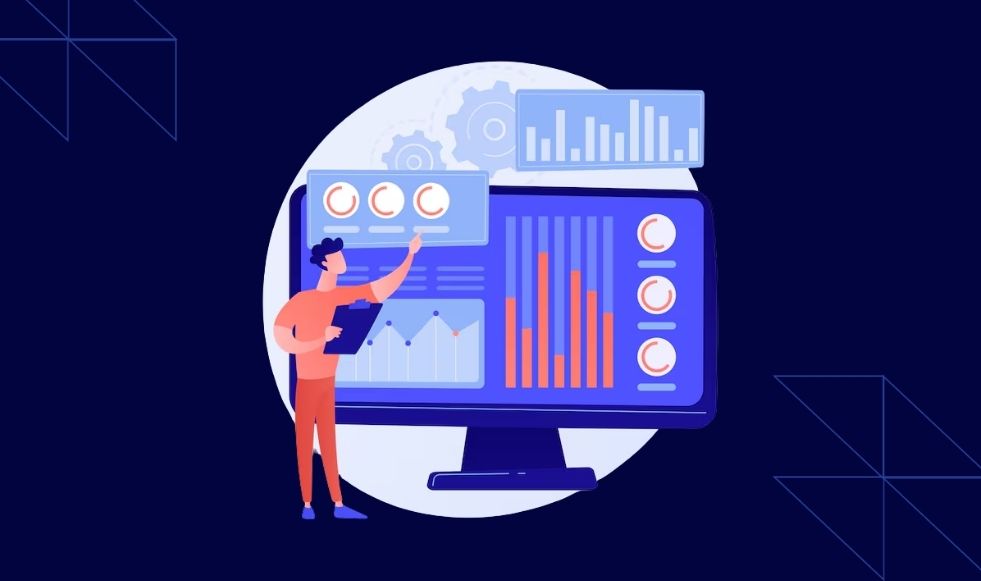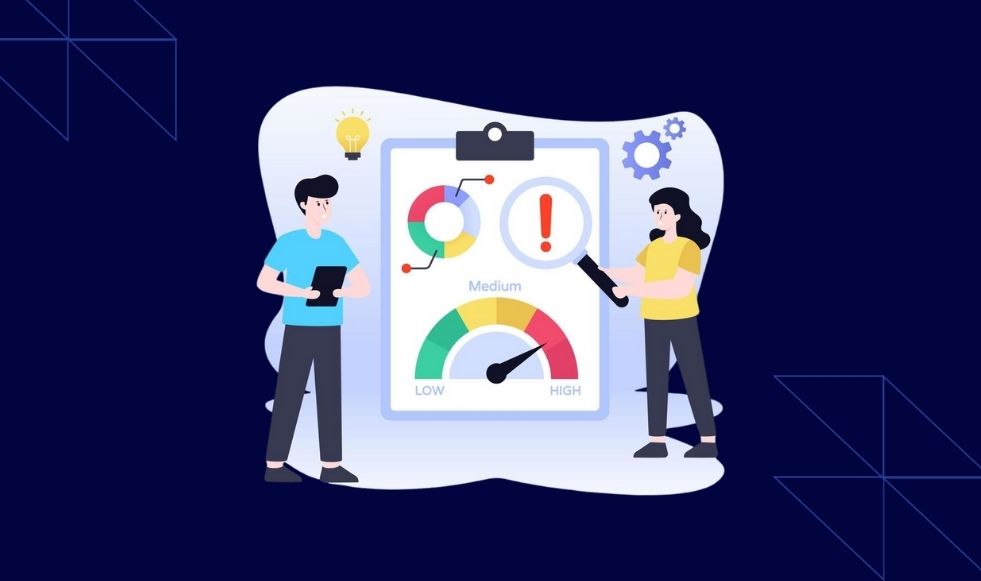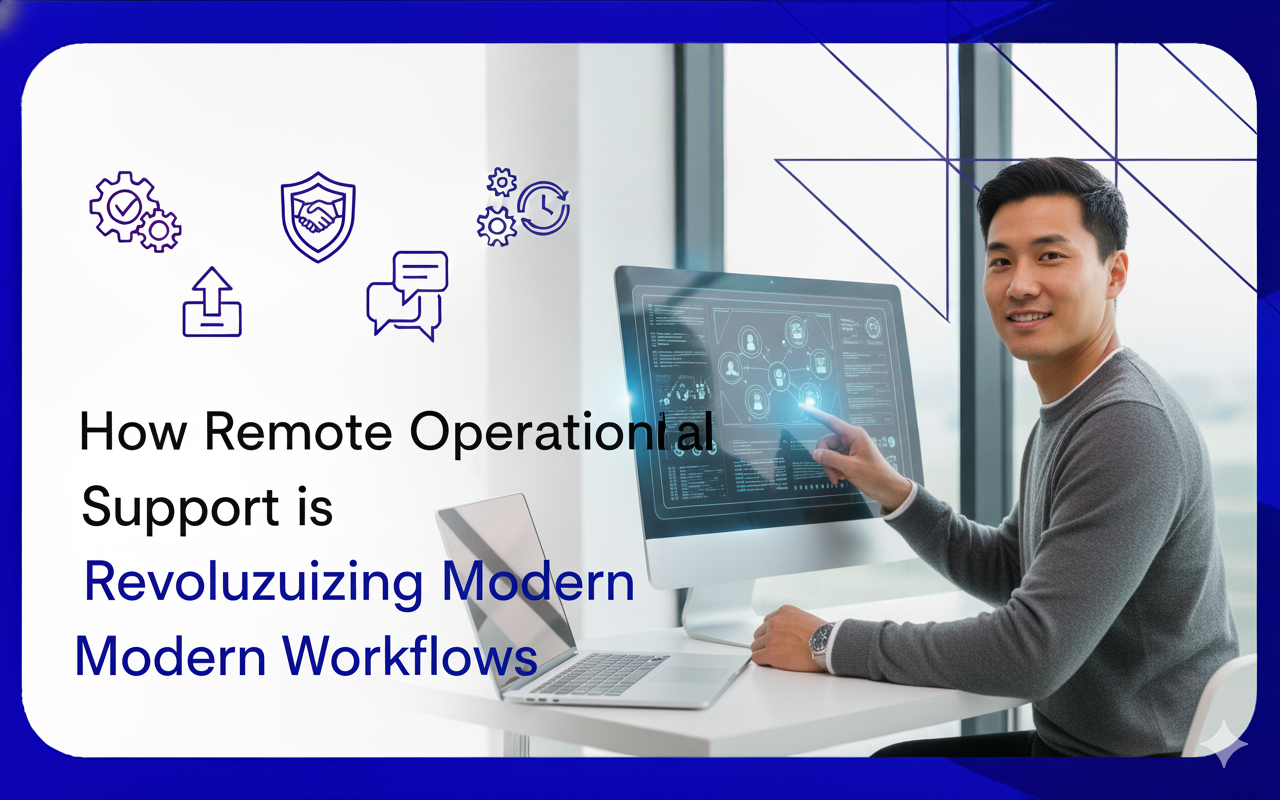Remote operational support refers to the process of outsourcing business tasks or processes to external teams who work off-site. Some common tasks handled by such agencies are IT, HR, Payroll, Customer Service, and more. Through such support, you can replace traditional in-house expenses like staffing, infrastructure, and on-site maintenance.
Customer: I’m unable to make the payment. Can you help?
Agent: I’m sorry, we are facing a technical glitch.
Customer: How long will it take to resolve?
Agent: We called an expert team. Please wait for 2 business days at the latest.
Does your downtime still run into days? Chances are, none of your customers will wait that long in 2025. They will simply switch to buy from your competitors.
Any solutions? Why call for help to your office when support can walk in through your screen? Yes, that’s the promise of remote operational support! Studies show that the remote support software market alone is already worth $5 billion in 2025. It is projected to grow threefold to $15 billion by 2033.
Interested in remote business support services? In this article, you’ll learn what remote operational support is, how it works step by step, and the direct benefits for businesses like yours.
What is Remote Operational Support?

Remote operational support is when experts manage your business systems from a distance. Instead of being at your office, they connect to your devices or platforms through the internet. Also known as “remote back office support”, it allows them to:
- Check problems
- Install or update software
- Monitor performance
- Instruct/ guide your in-office team
Mostly, remote business support services can be extended in two ways:
| Attended Support | Unattended Support |
| A staff member is present during the session and works with the expert in real time. | The expert solves problems or runs updates without anyone needing to be present. |
How Does Remote Operational Support Work?
Studies show that more than 75% of companies offer some form of remote work in 2025. But how does this happen? Mostly, remote back-office support is extended through “cloud-based workflow tools”. They are online platforms that are hosted on the internet (“cloud”) instead of being installed on one computer. Remote operational support teams can access them from anywhere with an internet connection.
For a greater understanding, let’s see how remote business support services are offered in five simple steps:
- Access Permission
-
- You or your staff provide approval for the expert to connect.
- Such an approval is usually given by:
- Clicking a secure link
- Entering a code
- Granting access through cloud-based workflow tools
- Secure Connection Setup
-
- The expert logs in through specialized software.
- This software creates a protected link to your system.
- This ensures no one else can interfere or view the session.
- System Visibility
-
- Through screen sharing or monitoring tools, the expert can view what is happening on your system in real time.
- This gives them the same visibility as if they were sitting at your desk.
- Diagnosis and Action
-
- The expert identifies the root cause of the issue.
- They may run tests, review logs, or check settings.
- Based on findings, they perform tasks like installing software or adjusting configurations.
- Confirmation and Closure
-
- Once the task is complete, the expert verifies that the system or process is working correctly.
- They can also provide a short explanation or a report so your team knows what was done.
In 2025, several VPs, directors, and senior managers of leading D2C companies and consumer brands are now hiring remote business support services providers to minimise resolution times and boost CX (customer experience).
What Does Remote Back Office Support Cover?
Remote support is not limited to IT. It covers several back office tasks such as:
- Quality assurance customer service
- Bookkeeping services for small businesses
- Digital customer experience solutions
- Inbound and outbound call center services
- Software or application deployment
- Voice telco services
- Omnichannel messaging solutions
- Data backup and monitoring
- Security updates
- User training and guidance
How Remote Operational Support Can Help You in 2025?

Did you know? About 70% of all tech issues can now be resolved without physical presence. Yes, this happens thanks to remote operational support. Furthermore, proactive remote monitoring can prevent up to 80% of downtime incidents.
In 2025, such support is a must-have for D2C companies or consumer brands earning $5M+ revenue and operating in multiple regions, such as the US, UK, and Australia. For more clarity, check out how remote operational support benefits you:
1. Better Use of Staff Time
Remote operational support often uses automation and online tools to complete repetitive tasks like:
- Giving updates
- Report generation
- Data entry
This frees up time for your in-office staff, which can be invested in critical work, such as new product launches or making business expansion plans. Remote back office support removes routine bottlenecks. This allows your team to focus on activities that directly add value instead of being stuck on small operational issues.
2. Lower Risk of Errors
Manual tasks, such as data transfers or system updates, are prone to mistakes. Remote business support services providers use:
- Pre-set rules
- Automated scripts
- Expert oversight
This allows them to achieve near-100% accuracy. Also, this reduces the chance of:
- Incorrect entries
- Missed updates
- System misconfigurations
Always remember that, Fewer errors = Fewer delays = Less time wasted on rework.
3. Ability to Grow Without Extra Burden!
As your business grows, managing operations requires you to hire more people or rent more infrastructure. But remote back office support eliminates these needs. That’s because many of your functions can be handled online without hiring new staff or adding physical resources.
For example,
- Say your D2C business grows and doubles sales.
- You start getting more customer requests or need to maintain larger data volumes.
- Now, this can be managed by leading remote business support services providers like Atidiv.
- When you do such outsourcing, there is no need to pay for the subscription fee of advanced tools or rent additional office space.
4. Minimum Downtime and Happy Customers
It is common for businesses to experience breakdowns, such as
- Billing software stops generating invoices
- The point-of-sale system fails during checkout
- Website crashes during peak traffic
- The inventory tool shows incorrect stock data
- Email service stops sending messages
In such cases, waiting for an on-site visit can slow business to a halt. In contrast, remote operational support allows experts to:
- Step in immediately
- Connect to your system
- Resolve the issue
This minimizes downtime + keeps your services running. Also, it ensures your customers or clients are not left waiting for long. Furthermore, recent research found that improved security management within remote support has led to a 60% reduction in breach risks for organisations.
5. Achieve Cost Reduction
One of the major benefits of remote operational support is cost reduction! By outsourcing back office support services to leading agencies like Atidiv, you can achieve up to 60% cost savings as compared to in-house teams.
How? That’s because on-site support often comes with:
- Travel costs
- Extra staff requirements
- Administrative overhead
Remote operational support cuts these costs because experts can deliver the same service from anywhere. In this way, you pay for the solution and not for travel or additional resources.
6. Benefit from Augmented Reality (AR)
In 2025, leading remote business support service providers are using Augmented Reality (AR) while offering support. Through them, their experts are guiding users with real-time visual instructions over live video.
For example, AR allows for overlaying digital arrows, labels, or step-by-step directions directly onto a technician’s screen. This reduces confusion + speeds up troubleshooting. Also, it removes the need for on-site visits.
Get Expert Remote Operational Support from Atidiv in 2025!
In remote operational support, you get expert help from a distance to manage your business systems and processes. There is no need for an on-site presence. In 2025, several leading remote business support service providers are using “automated workflows”, which allow their clients to:
- Handle routine tasks up to 40% faster
and
- Cut response times for technical issues by about 30%
Some more benefits of outsourcing back office support services are fewer errors from manual handling, minimum downtime, and reduced costs.
If you are looking for a reliable outsourcing partner for back-office support, Atidiv is a market leader with 15+ years of experience and 70+ clients. Our expert team reduces errors and turnaround times. Also, we offer real-time analytics and intelligent automation.
So, want to free up your in-house staff for other critical tasks? Learn how Atidiv can help you. Book your free consultation today!
Remote Operational Support FAQs
1. How can remote operational support help my small business save money?
By outsourcing remote operational support, there is no expenditure on:
- Travel costs
- Extra infrastructure
- Subscription fees for advanced software
- On-site staff
Instead, you pay only for the services you need. This way, you get access to expert help + automation tools without carrying the expense of a full in-house team.
2. Is my company’s data safe when giving remote access to outside experts?
Yes, if handled by trusted providers! Several remote business support services providers use:
- Encrypted connections
- Strict access controls
- Monitoring logs
These efforts ensure your data stays secure. On your part, you can also limit permissions so experts only access what is necessary (for troubleshooting or managing operations).
3. What types of business operations can be handled through remote operational support?
Remote back office support covers several business tasks, such as:
- IT systems
- Accounting platforms
- HR tools
- Customer service portals
- Inventory management
- Workflow automation
As a business owner, you must realize that any process that runs online or on a connected platform can be supported remotely. The benefit? There is no need for constant on-site interventions.
4. Can remote experts resolve issues quickly?
One of the major benefits of remote operational support is “minimum downtime”. Most problems can be handled instantly since experts connect to your systems online.
For example, instead of waiting hours or days for a technician to visit, remote support allows experts to identify and resolve issues within minutes. Everything happens online via cloud-based workflow tools.
5. What should I look for in a remote support partner in 2025?
In 2025, you should choose a partner that offers:
-
- Automation (via latest AI models)
- Strong data security
- Experience across industries
Also, you should look for providers who give real-time analytics and clear reporting. We at Atidiv use intelligent automation and have experience across 20+ industries. Also, we offer real-time analytics + process insights that can refine your business workflows.
For more information, book your free consultation today. Let’s talk!

